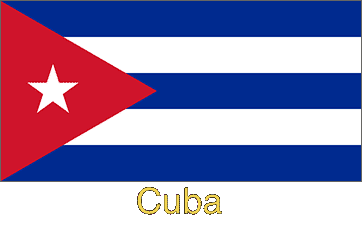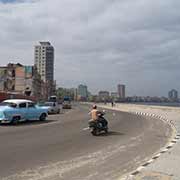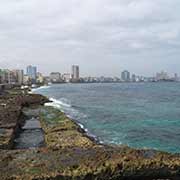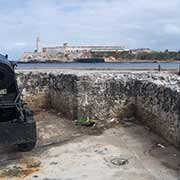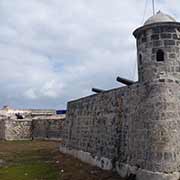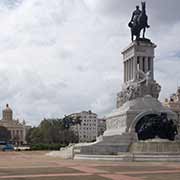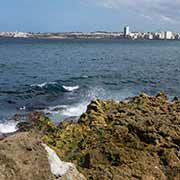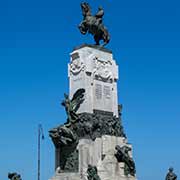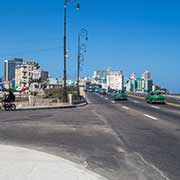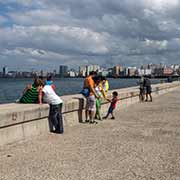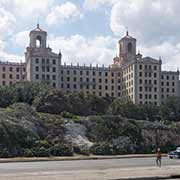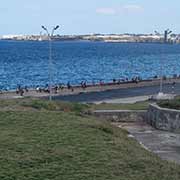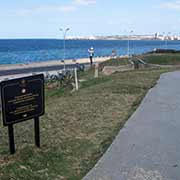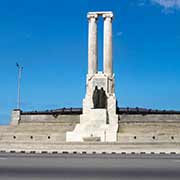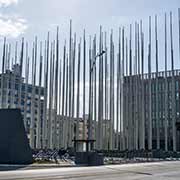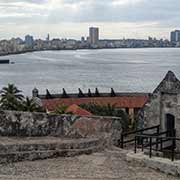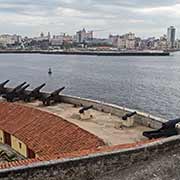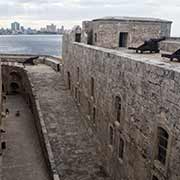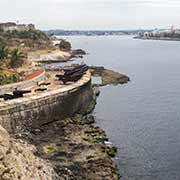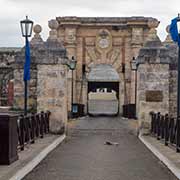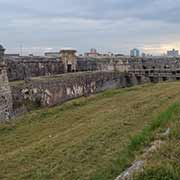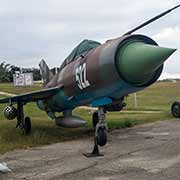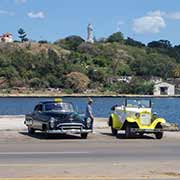Photos of Along the Malecón, Havana, Cuba
Along the Malecón, Havana
The Malecón, officially Avenida de Maceo, is the broad esplanade, roadway and seawall which stretches for 8 kilometres along the coast, from the mouth of Havana Harbour in Old Havana, along the north side of the Centro Habana neighbourhood, ending in the Vedado neighbourhood. Construction of the Malecón began in 1901, during temporary US military rule, mainly to protect Havana from the water and the so-called Nortes, the menacing northerly winds. In reality, it would end up serving more for nighttime promenades by Habaneros, for lovers and most of all for individual fishers; and nowadays also tourists ride along its length in vintage 1950s American cabriolets
you may then send it as a postcard if you wish.
Numerous luxury hotels, casinos and nightclubs were constructed during the 1930s in the Vedado neighbourhood to serve Havana’s burgeoning tourist industry. In the 1930s, organised crime characters took advantage of Havana’s nightclub and casino life, American mobsters like Santo Trafficante, Jr. took the roulette wheel at the Sans Souci Casino, Meyer Lansky directed the Hotel Habana Riviera, with Lucky Luciano at the Hotel Nacional Casino. At the time, Havana became an exotic capital of appeal and numerous activities ranging from marinas, Grand Prix car racing, musical shows and parks. It all ended after the Cuban Revolution when each American hotel was nationalised; they have now been refurbished, keeping their original style. And although the houses lining the Malecón are mostly in ruins, the esplanade remains one of Havana’s most spectacular and popular destinations, with large statues and the, in 2015, reopened American Embassy.
From the Malecón and Havana, across the Canal de Entrada, is the Castillo De Los Tres Reyes Del Morro, named after the three biblical Magi, a fortress guarding the entrance to Havana Bay. It was designed by Italian engineer Juan Bautista Antonelli to defend the city and built by slaves with rocks extracted from the moats in the last decades of the 16th Century. To the east is the Fortaleza de San Carlos de la Cabaña (Fort of Saint Charles), colloquially known as La Cabaña, the third-largest fortress complex in the Americas, located on the elevated eastern side of the harbour entrance in Havana. Construction started in 1763 because of El Morro’s overland vulnerability and was completed in 1774. After the Revolution, Che Guevara used the fortress as a headquarters and military prison for several months, and many executions took place. Further east is the Cristo de La Habana (Christ of Havana), a giant sculpture of white Carrara marble, representing Jesus of Nazareth, overlooking the harbour.


